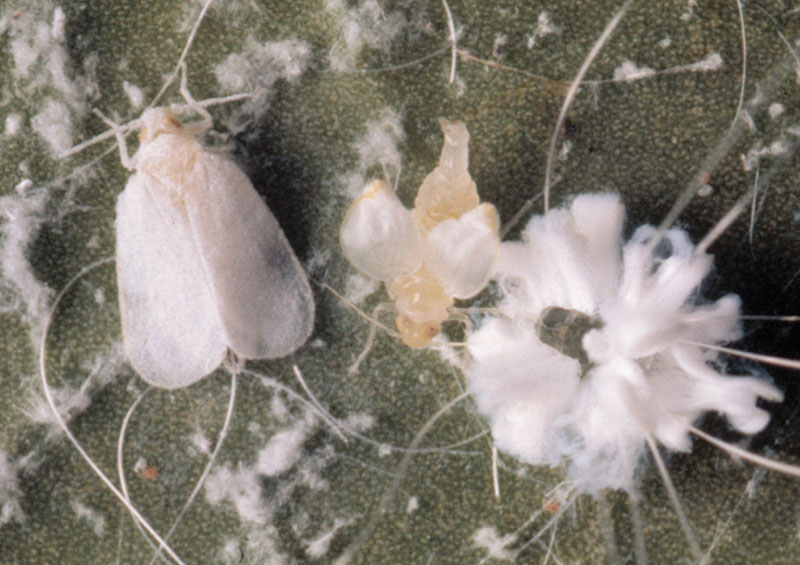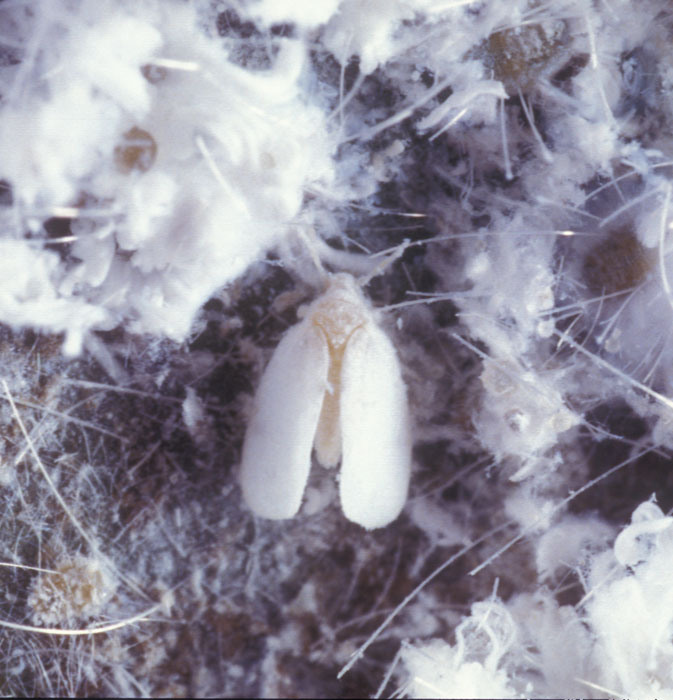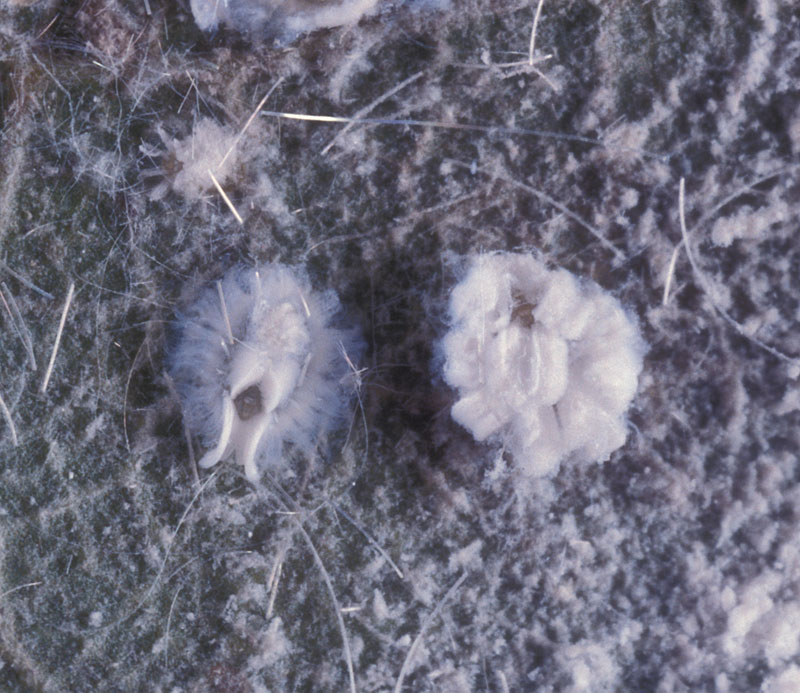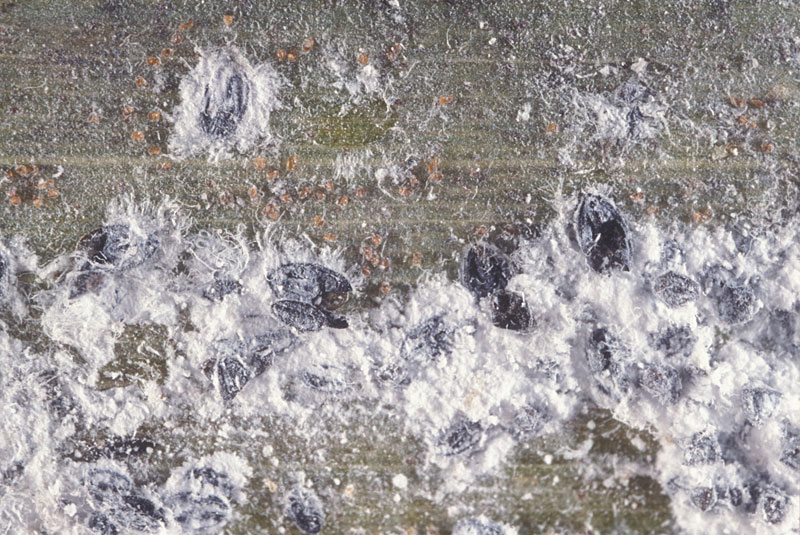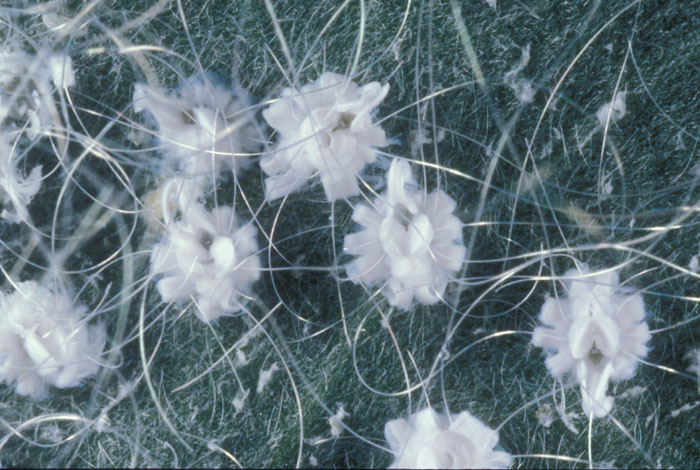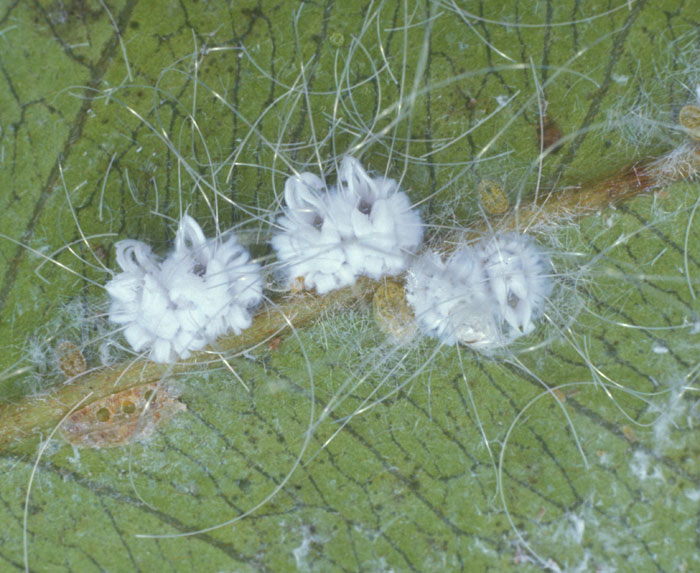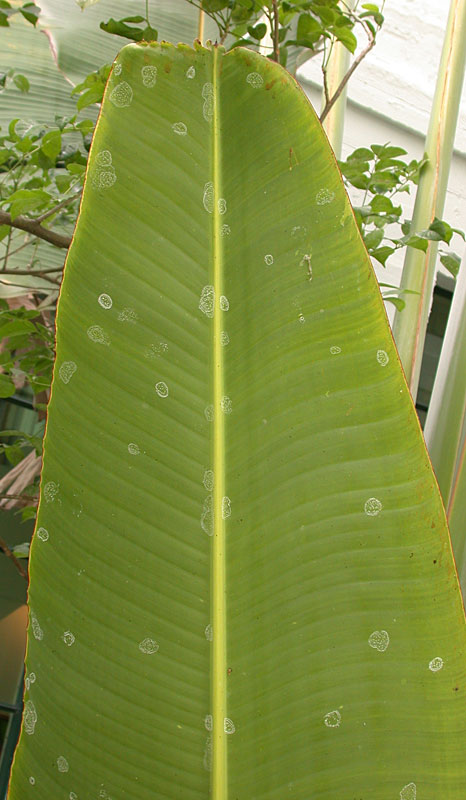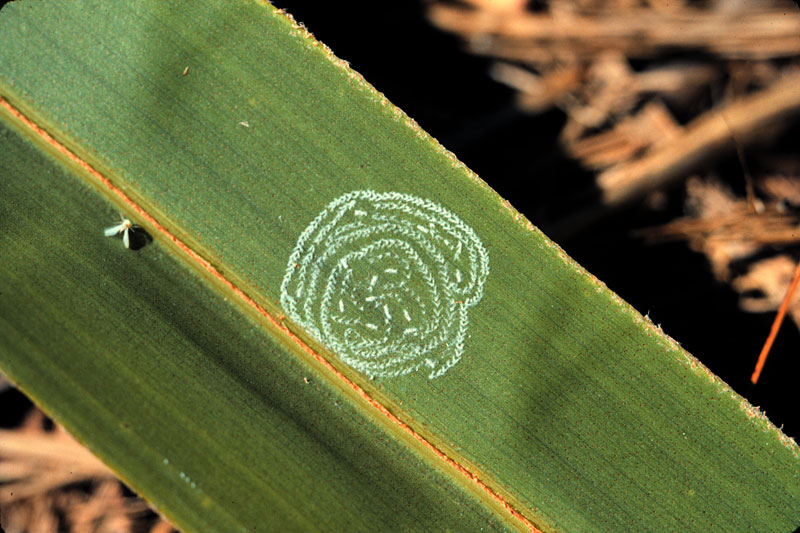Whiteflies
|
spiraling whitefly, Aleurodicus dispersus, adult and nymph; Photo by Lyle Buss, University of Florida |
|
spiraling whitefly, Aleurodicus dispersus, adult; Photo by Lyle Buss, University of Florida |
|
spiraling whitefly, Aleurodicus dispersus, nymph and pupa; Photo by Lyle Buss, University of Florida |
|
Aleurotrachelus atratus, nymphs; Photo by Lyle Buss, University of Florida |
|
spiraling whitefly, Aleurodicus dispersus, pupae; Photo by Lyle Buss, University of Florida |
|
spiraling whitefly, Aleurodicus dispersus, pupae; Photo by James Castner, University of Florida |
|
spiraling whitefly, Aleurodicus dispersus, eggs on travelers tree, Ravenala madagascariensis; Photo by Lyle Buss, University of Florida |
|
spiraling whitefly, Aleurodicus dispersus, eggs on palm leaf; Photo by T.K. Broschat, University of Florida, IFAS/FLREC |
Rank & taxon
Family Aleyrodidae
Description
Whiteflies are not true flies but are closely related to scales, mealybugs, and aphids. Adult whiteflies are usually around 2-3 mm long. They are tiny, soft-bodied insects that resemble very small moths. Color of the insect inself varies, but they are covered with a white waxy secretion that nearly always contributes largely to the appearance of the insect, regardless of the life stage. Eggs are usually attached to the underside of the leaf with a small pedicel and are frequently laid in arcs or circles accompanied by a dusting of white wax. All stages of nymphs superficially resemble scale insects and may have ornate waxy secretions in the later instars. The first instarinstar:
stage in an insect's life history between any two molts. The newly hatched insect is the first instar, and the adult (imago) is the final instar.
, or crawler, has functional legs, while subsequent instars are sessile. The fourth instarinstar:
stage in an insect's life history between any two molts. The newly hatched insect is the first instar, and the adult (imago) is the final instar.
, or pupa, is 0.5-2 mm in length, oval or elongate-oval in length, with a body margin that is either smooth or variously sculpted. The pupa is generally the stage that is used to make species identifications, using the arrangement of pores and other minute structures that must be examined microscopically on mounted specimens.
Distribution
Worldwide, though occur infrequently in cooler temperate regions; 2 subfamilies, 130 genera, representing around 1,450 described species
Biology/life cycle
Whiteflies pass through four instars on their way from egg to adult. Whitefly reproduction is usually sexual, with fertilized eggs producing females and unfertilized eggs producing males. Eggs are usually laid on the underside of leaves in circles or arcs and are frequently conspicuous due to a dusting of white wax. The first instarinstar:
stage in an insect's life history between any two molts. The newly hatched insect is the first instar, and the adult (imago) is the final instar.
, or crawler stage, emerges and attaches to the plant to begin feeding. The nymphs become immobile after their first molt, and may closely resemble scale insects in the next few stages. The fourth instarinstar:
stage in an insect's life history between any two molts. The newly hatched insect is the first instar, and the adult (imago) is the final instar.
is commonly referred to as a "pupa" though it is not a true pupa. Feeding ceases during this stage, and the insect emerges as the winged adult. Phloem sap is the primary food source for whiteflies at all stages. Most pest species of whitefly have several to many generations per year, but some species are thought to have only one or two generations per year.
Hosts
Palms: primarily Cocos nucifera (coconut palm), but can also occur on other palm species including Washingtonia spp. (fan palms), Phoenix dactylifera (date palm), Veitchia merrillii (Christmas palm), and Elaeis guineensis (African oil palm)
Other: can infest a wide variety of dicotyledonous plants and are likely primarily adapted to them
Representative taxa on palms
Aleurodicus dispersus (spiraling whitefly) is commonly found on coconut palms in areas where they both occur, though it is not always considered a pest.
Aleurotrachelus atratus is found throughout the Caribbean, northern South America, and southern Florida, and infests various palm species, including coconut palm, African oil palm, and Christmas palm.
May be confused with
Some whitefly pupae can look very similar to palm aphids (Cerataphis spp.).
Additional comments
All feeding stages of whiteflies secrete honeydewhoneydew:
the sticky, sweet secretion produced by sap-feeding bugs
and so may be accompanied by sooty mold, which flourishes on the honeydewhoneydew:
the sticky, sweet secretion produced by sap-feeding bugs
. However, few species of whitefly are ant tended. Identification of whitefly species is usually based on the morphology of the fourth instarinstar:
stage in an insect's life history between any two molts. The newly hatched insect is the first instar, and the adult (imago) is the final instar.
("pupa") and requires mounting of specimens onto microscope slides. For definitive species confirmation, specimens should be submitted to an expert.
Some whitefly pupae can look very similar to palm aphids (Cerataphis spp.).


